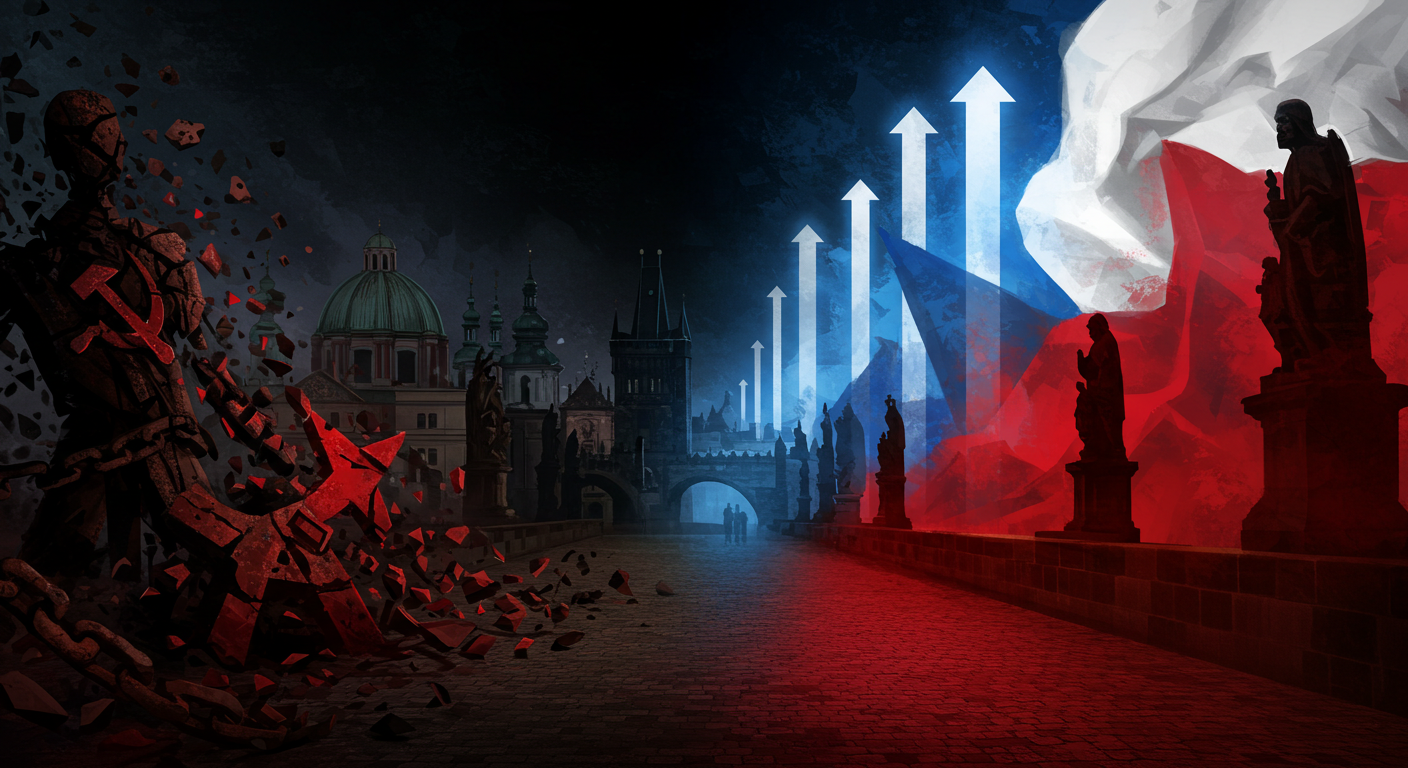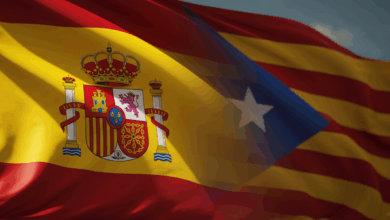The Czech Republic’s Stand Against Communism

While visiting Prague, the capital of the Czech Republic, I was intrigued and surprised by the amount of art and public displays commemorating communism and the Soviet era. These weren’t honorary tributes to “golden times,” but rather pieces honoring those who suffered under the regime; reminders never to forget, and never to return to, those dark times.
After John Lennon’s 1980 murder, this wall grew into a symbol of quiet resistance in communist Czechoslovakia.
These displays range from the John Lennon Wall, where young Czechs expressed their discomfort and protested against the Soviet regime, to the Memorial to the Victims of Communism, a striking display of bronze figures progressively melting and disfiguring, representing the mental and physical degradation of those who suffered between 1948 and 1989. Soviet-backed communist rule was characterized by censorship, persecution, economic decay, and a lack of freedom. Czechs know, and they remember: communism and all its cousins (socialism and fascism) are deeply harmful and dangerous to society.
The Memorial to the Victims of Communism, a series of statues honoring those who suffered under the communist regime from 1948 to 1989.
This conviction was recently brought into the legislature. On July 17, 2025, Czech President Petr Pavel signed a new law prohibiting communist propaganda, equating the promotion of communism with the already illegal Nazi ideology. The law allows prison sentences of up to five years for anyone who “establishes, supports, or promotes Nazi, communist, or other movements which demonstrably aim to suppress human rights and freedoms or incite racial, ethnic, national, religious or class-based hatred.” In more severe cases, such as organized activity, sentences may reach ten years.
The law, influenced by institutions like the Institute for the Study of Totalitarian Regimes, passed with little resistance. Parties in the center-right spectrum framed it as a matter of justice. Totalitarian ideologies, they said, have no place in Czech society. MP Michael Zuna of the TOP 09, a liberal-conservative political party, declared it “a symbolic act of justice for victims of the Communist regime (1948–1989), which executed people and imprisoned dissidents including the late Václav Havel.”
This consensus extends to the public. The Communist Party of Bohemia and Moravia, the direct successor of the pre-1989 ruling party, failed to secure any parliamentary seats in 2021, winning just 3.6% of the vote. Though they called the new law “politically motivated” and “discriminatory,” the party is now forced to distance itself from its own history and ideology. Overt praise of the old regime’s slogans and symbols is now punishable, and society itself has moved on: by 2023, only 17% of Czechs believe that their current situation is worse than before 1989.
The strength of this anti-communist sentiment comes from lived experience. In 1948, the Communist Party seized power, transforming Czechoslovakia, the region’s last democracy, into a one-party dictatorship aligned with Moscow.
What followed were four decades of repression. Industries were nationalized, agriculture collectivized, and central planning imposed. Political opposition was crushed: by 1960, an estimated 150,000–160,000 people had been sentenced for political reasons, with at least 248 executed. Tens of thousands passed through forced labor camps, and thousands more died behind bars under brutal conditions. The regime staged infamous show trials, such as that of Milada Horáková, executed in 1950 on fabricated charges of treason. Dissidents like Václav Havel, later president, were jailed for their writings. Ordinary citizens lived under censorship, surveillance, and the ever-present fear of the secret police.
In 1968, an effort to reform communism into “socialism with a human face” was crushed by a Soviet-led invasion. About 108 people were killed, 500 injured, and a wave of emigration followed. The subsequent “normalization” re-imposed hardline rules, leading to purges, exile, and blacklisting. At least 276 citizens were killed attempting to flee across the Iron Curtain.
For many families, the scars remain personal—lost relatives, confiscated property, careers denied. By 2019, surveys showed that only 10% of Czechs had a positive view of the communist coup, and 73% agreed that the 1989 democratic revolution had been worth it.
Anti-Soviet sentiment intensifies considering the Czech Republic’s boom after communism. The Velvet Revolution of November 1989 toppled the regime peacefully and returned freedom to the Czechs after four decades of dictatorship. By 1990, free elections were held, and by 1993, the Czech Republic emerged as an independent state after its split from Slovakia. What followed was a rapid embrace of democracy and markets. Reforms included privatization, economic liberalization, and integration into the world economy. The adjustment was difficult, initial output fell, and uncertainty was widespread, but in the long run, reforms unleashed productivity and entrepreneurial energy.
Anchored by NATO membership in 1999 and EU accession in 2004, the Czech Republic firmly joined the West. Economically, the transformation has been remarkable. Once stagnant under central planning, the Czech Republic is now one of post-communist Europe’s greatest success stories. Its GDP per capita, adjusted for purchasing power, has surpassed Spain’s. Unemployment in recent years is among the lowest in Europe, around 3%, and public debt remains modest. The Fraser Institute ranks the Czech Republic 22nd in economic freedom, and the Legatum Institute places it 25th in prosperity.
As early as 2009, 79% of Czechs supported the shift to a free market economy, the highest rate among former Eastern Bloc nations. Younger generations have grown up with prosperity, openness, and opportunities that their parents were denied.
Even though departing from the Soviet model brought prosperity, Czechs must not forget that freedom of speech, association, and political plurality are healthy for a society, as they allow consensus to prevail and new ideas to emerge. The Czech Republic’s government holds strong views against certain ideas, deeming them a danger and threat to society. However, categorizing certain ideas as “threats” can take a back-turn and open to broader censorship under the flag of “protection.”
The Czech Republic’s message is clear, not only through this recent law, but also through the monuments of Prague, the memories of families, and the successes of a free economy: totalitarian ideologies, whether communist or fascist, will never find fertile ground here. This shared sentiment is valid, but should it go as far as to justify censorship?
The post The Czech Republic’s Stand Against Communism was first published by the Foundation for Economic Education, and is republished here with permission. Please support their efforts.



